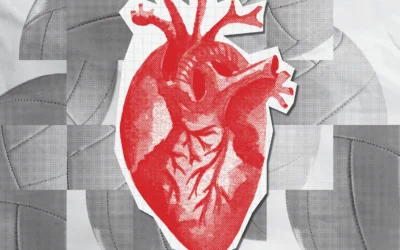What is love? The word means different things to different people, and even the same person will use it differently depending on the context. People also express their love in different ways. A fellow named Chapman suggests that words of affirmation, acts of service, gifts, quality time and physical touch are all ways we understand affection from other people. (Search for The 5 Love Languages online and take a quick quiz to find your own love language.) Each of these forms of expression comes loaded with the same intention.
I’ll bet most of us can agree that we know love when we feel it, even if we can’t explain it. We love people in our families, we love some of our friends, and we love our pets. Some psychological theories about the phenomenon attempt to explain love in more objective terms. Sternberg’s Triangular Theory of Love, for example, includes three components—intimacy, passion and commitment. According to Sternberg, each of these elements exist on their own or interact with at least one other component in the triangle to produce eight different types of love experience. Sternberg refers to romantic love, companionate love and fatuous love as types of relationships that tend to be more stable than relationships comprised of intimacy, passion or commitment alone, and when all three aspects are put together, we get what Sternberg calls consummate love. This is the type of romantic relationship most of us hope for: an equal balance of closeness and trust, sexual attraction, and long-term commitment.
Of course, there are those of us who believe in loving more than one person at a time. There are those of us who don’t like to have sex. There are also those of us who have faced stigmatization and physical violence because of the gender, ethnicity, religion or social class of the people we love. For better or worse, love takes all forms, and for some more than others, love means sacrifice and judgement.
For most of us, love means being vulnerable. Whenever someone or something we love leaves our lives, we feel the loss. The fear of this loss, or the shame we might feel about how deeply we care, can cause some of us to avoid the things we actually want more of in our lives. Here, an attitude of gratitude for the opportunities we do have can help keep things in perspective.
When I was growing up, the popular thing for girls in my town to do was take dance lessons. Even though it was a stretch for our family’s budget, my parents agreed to sign me up. I danced for four years, training weekly and traveling to the big city for competitions each spring. I loved it. An old injury eventually made it too uncomfortable for me to continue,so I resigned myself to watching So You Think You Can Dance and the occasional YouTube video. Then, in mid-January, I saw a dance performance called Shaping Sound at The Jubilee Auditorium. The show’s artistic director has received an Emmy for his past choreography, so, of course, the performance was impeccable. In addition to that, every song featured was one I listen to and love. I thoughtI was going to explode. I cheered. I shivered. I even teared up at one point. And I realized that, even though I’ve found other activities I enjoy, I’d forgotten the child-like glee that dance evokes for me.
What, or who, makes you feel that way? They say joy is the high, despair is the low, and life is what happens in between. We don’t live most of our lives in a sublime state of elation, but those moments of bliss or pure contentment can be indicators that we’re heading in the right direction. In life, you can’t always get what you want, but you do have a choice. You can make decisions based on fears about what you’ll lose or how silly you might look for going all in. Or you can take advantage of the opportunities you do have to fill your time with the people and things you love.
Choose love.





0 Comments